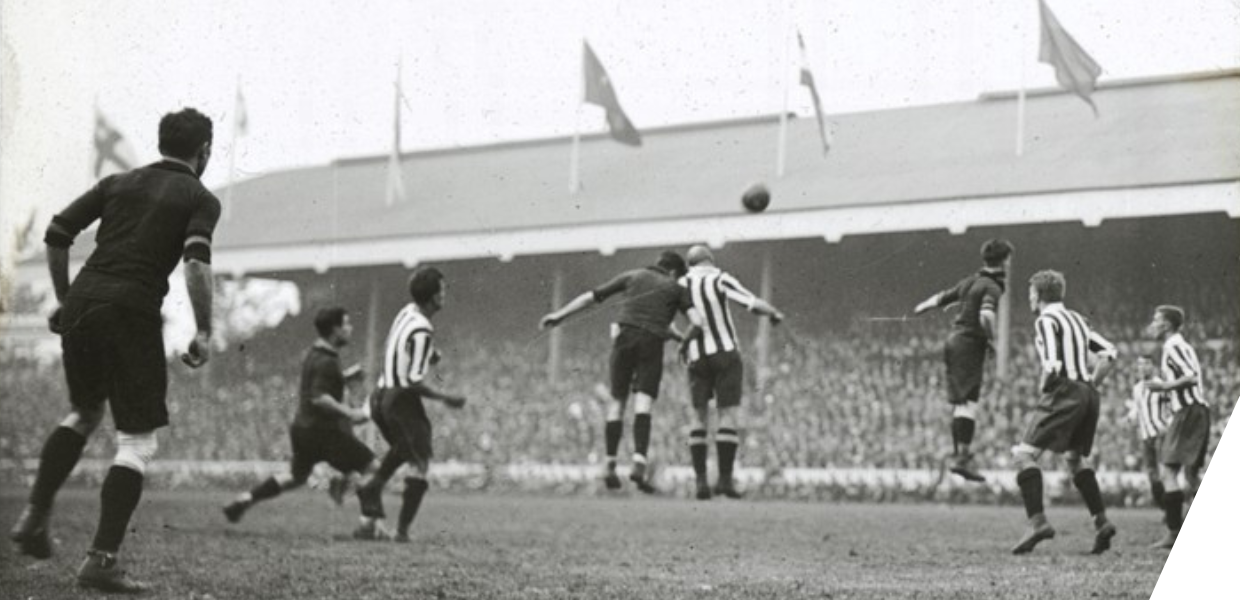Historiana is an online learning platform developed by EuroClio - European Association of History Educators, Europeana, USE and Webtic, to support the use of cultural heritage collections in education. Historiana curates source collections, which provide teachers with a ready made group of sources they can use in their lessons.
Historiana’s new source collection, The 1920 Antwerp Olympics, tells the story of a historical Olympic Games, hosted in the vibrant but, at that time, war-ravaged city of Antwerp, Belgium. 25 original photos of this collection provide a glimpse into how sports games have been evolving over time, the daily life of Europeans in the 1920s, and the aftermath of World War I. Read more about the stories behind the source collection in this Europeana blog.
The new collection is inspired by a project created by students in Mechelen under the guidance of sports historian Jurryt van der Vooren. Jurryt shares his experience of creating the collection with his students and gives inspiration for further activities.
Virtual visits for education
The Covid-19 pandemic was truly a challenge for history teaching and learning. History lessons became even more distant, because pupils could not go to cultural heritage sites to see, touch and feel historical objects. But at the same time, it prompted educators to get creative: to discover and make use of digital repositories - which is what Jurryt has done.
During his time teaching in Mechelen, Jurryt wanted to visit Sportimonium, a Belgian sports heritage centre, where a collection of 300 - 400 images is available, with his students Unfortunately, it was closed due to the pandemic. This brought Jurryt to Europeana, where the museum's collection can be ‘visited’ online.
Using Europeana, he tasked each student with finding four pictures about the 1920 Antwerp Olympic Games. The students were also asked to include a short explanation of why they were interested in the photos they chose.
A student-made source collection
During the research, one student found out that he was now living right at the place where the cycling events were held in 1920. The champion, Maurice Peeters, was born in Antwerp, but won the race as a Dutch sportsman. At moments like this, when the findings became personal for the students, Jurryt felt that his learning activity had achieved its goal. How amazing it is to discover that the history of the Olympics is somehow connected to your personal history!
Some students, who themselves do sports, even wrote down small stories of how they had also been part of the Belgian national team. They enjoyed looking back to the events organised more than 100 years ago, and reflecting on how some things were different but some still stayed the same.
These personal thoughts and ideas, instead of the champions or the number of medals, were what Jurryt wanted the students to write about. 'There is no official history,' he remembered telling the students. 'There is just your own version of history, and you are part of it.'
Another class activity that Jurryt enjoyed was to have the students imagine: 'if you were responsible for building a national sports museum, what would you like to show?' This exercise often stirred up heated class discussions. For example, the students debated the questions of whether to showcase the French part or the Dutch part of Belgium's sports history. They also had many opinions on the question of having foreign players in the Belgian national football team.
Jurryt always reminded the students that there was no good or bad answer. 'You are teaching me,' he told them. 'Now I am not your teacher. You are my teachers, telling me your opinions about sports and about Belgium.'
Building your own source collections
This learning activity is not something reserved only for the 1920 Olympics. As long as enough source materials are available, it can also be done about other countries and about tournaments. The important thing is to not look only at the sports itself, but be aware also of aspects such as sexism, racism, or political influences during research and discussions.
Jurryt offered his ideas about potential topics. The 1928 Olympics in Amsterdam, for instance, was viewed as an important event for Germany because it marked their return to the Olympics after World War I. Having students research the German view of the 1928 Olympics, then compare it to the Dutch or the French perspectives, would be a stimulating class activity.
Jurryt built this activity for students between 18 and 21 years old, but it can also be done with other age ranges. Students grow up in a digitised world; what educators need to teach them is not how to use the internet, but about how they can find the right sources of information, and how to evaluate the reliability of these sources.
If you are and educator and are interested in incorporating cultural heritage collections into your curriculum then visit Historiana, which offers a wide range of curated sources accompanied by detailed explanations of the sources’ history contexts.


